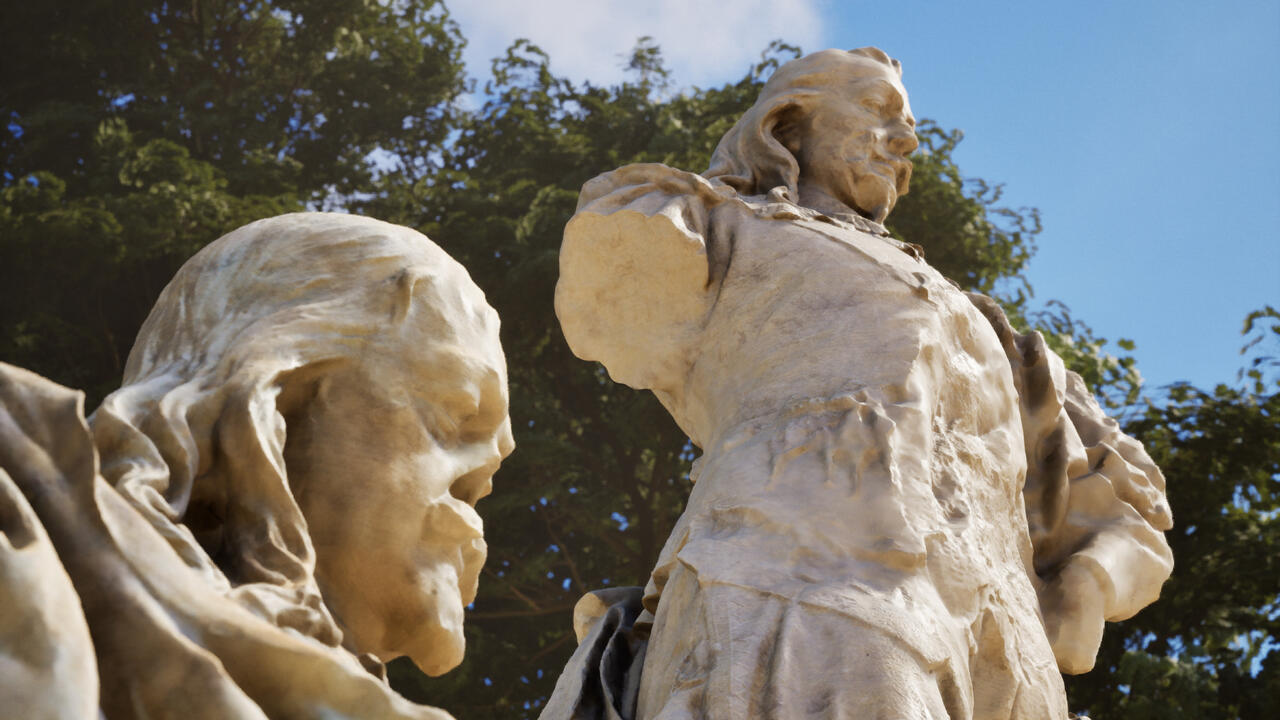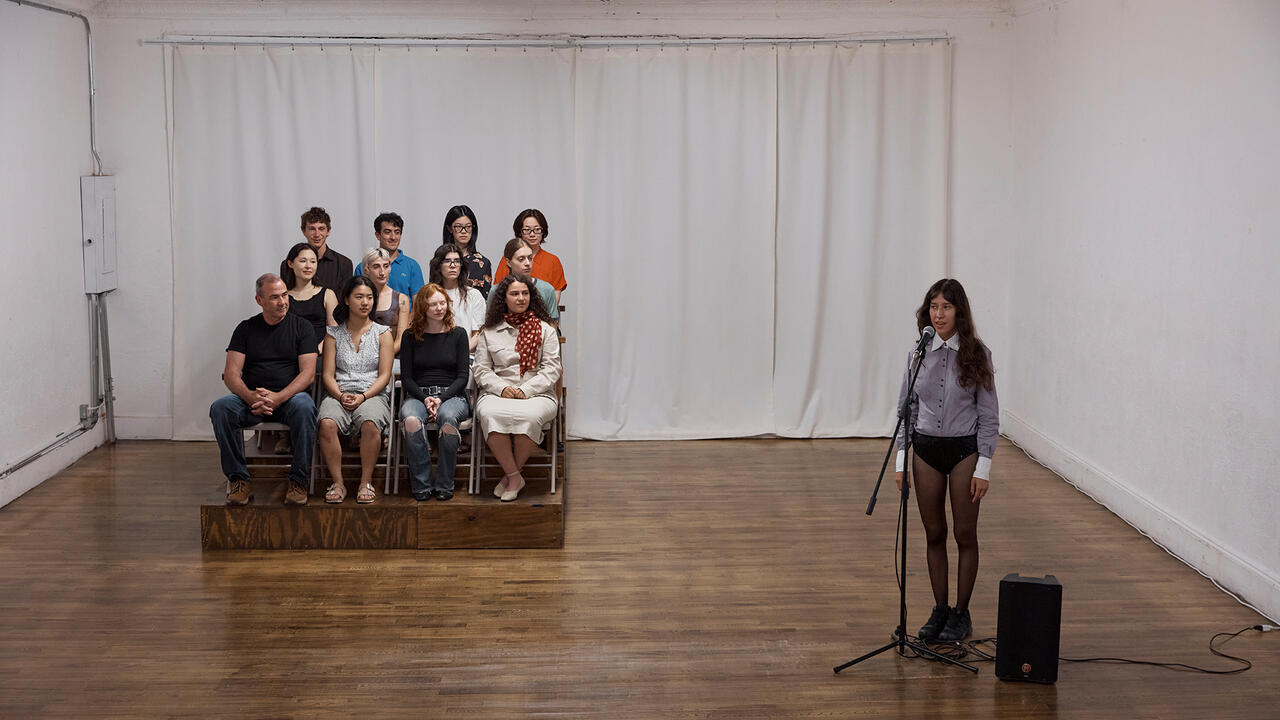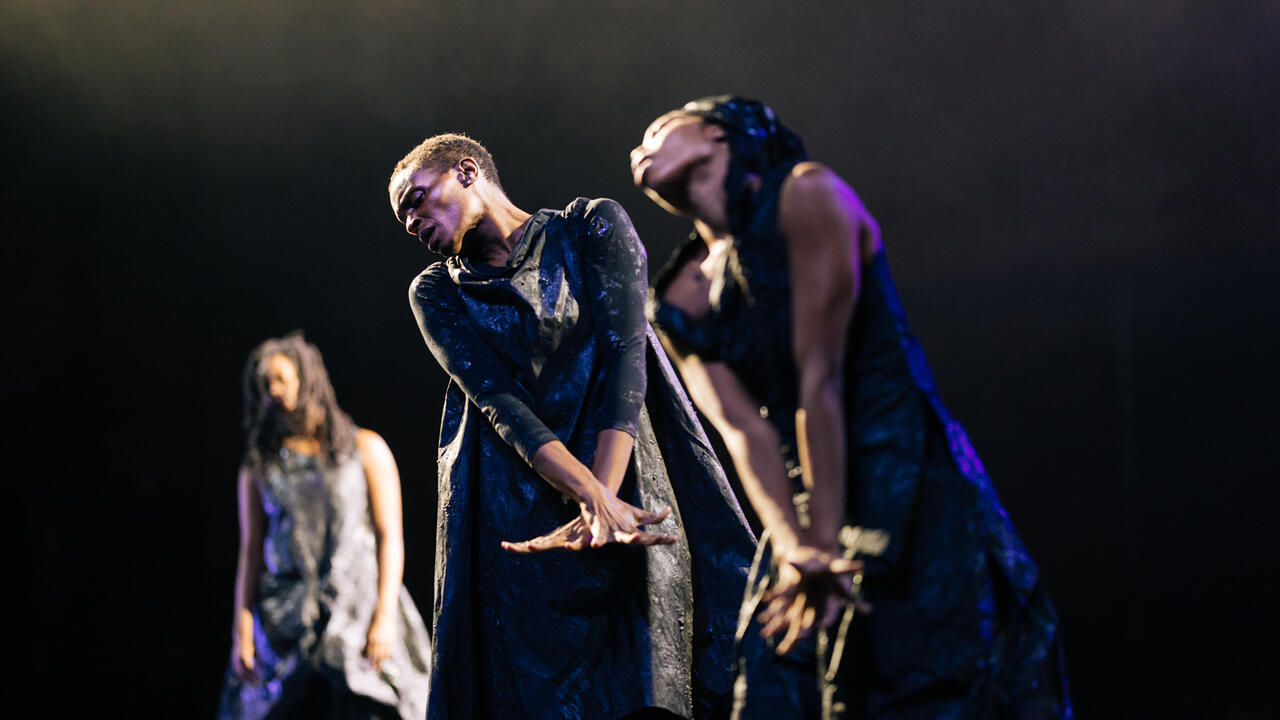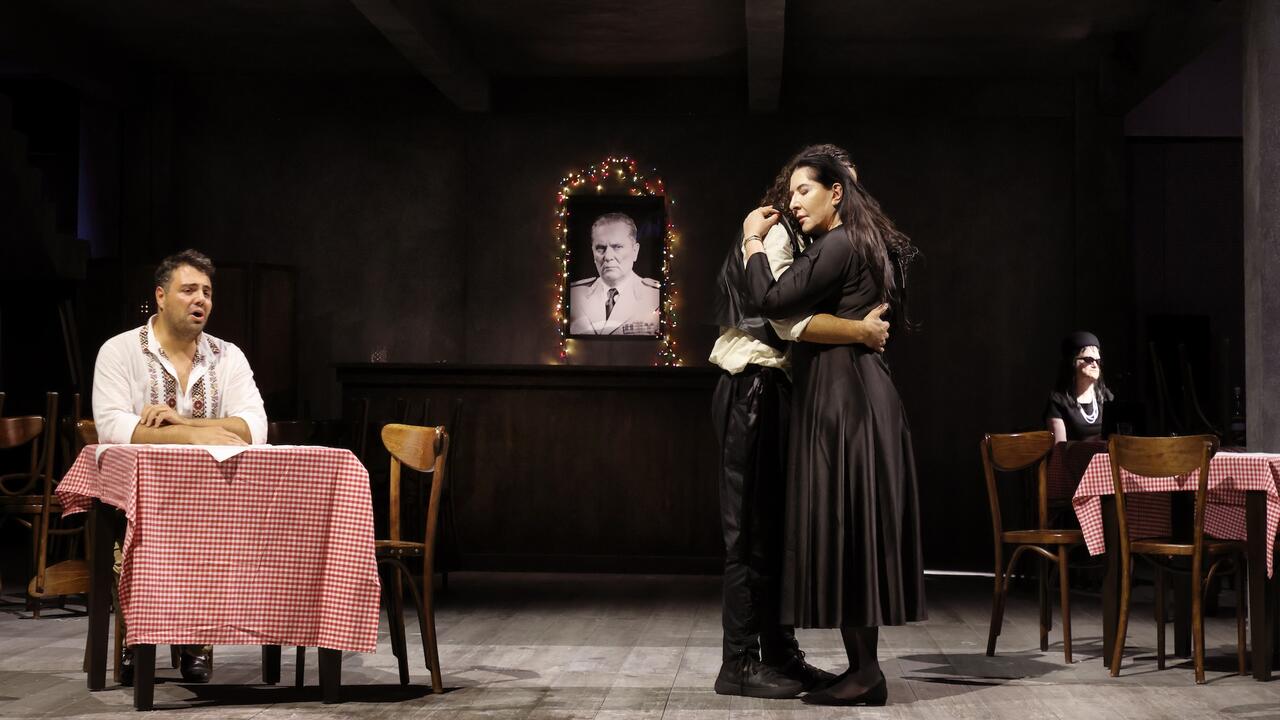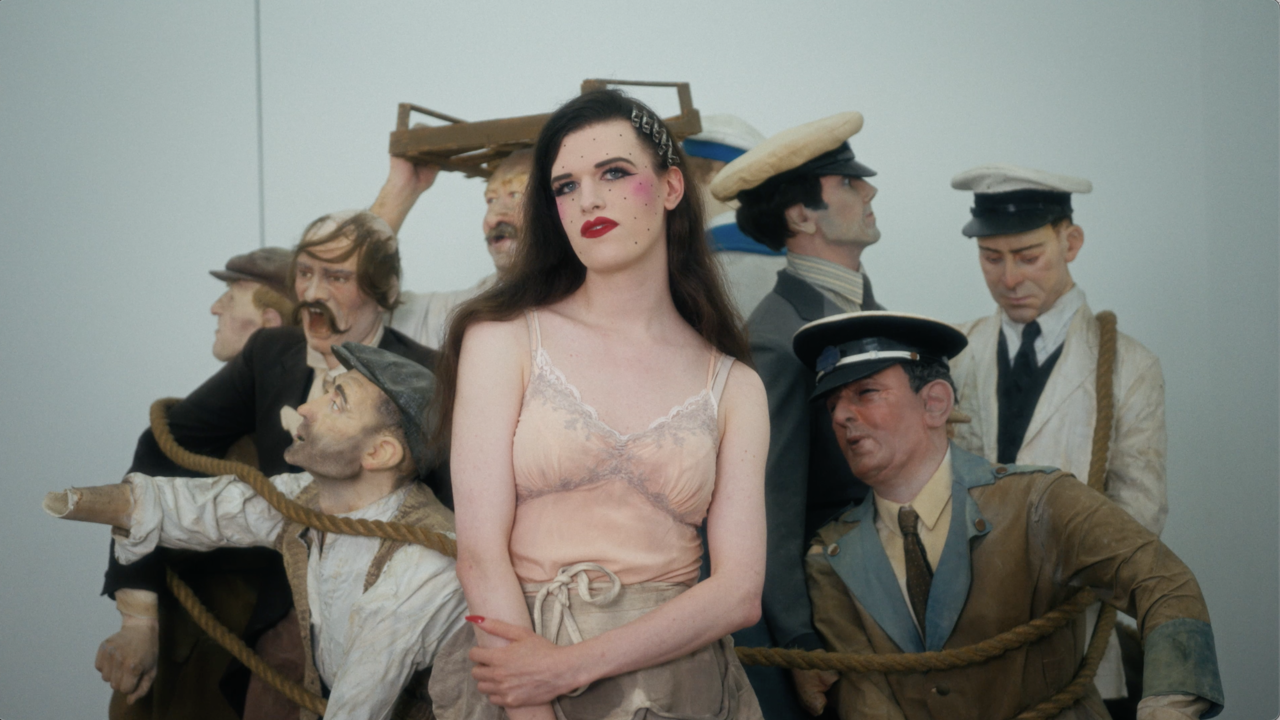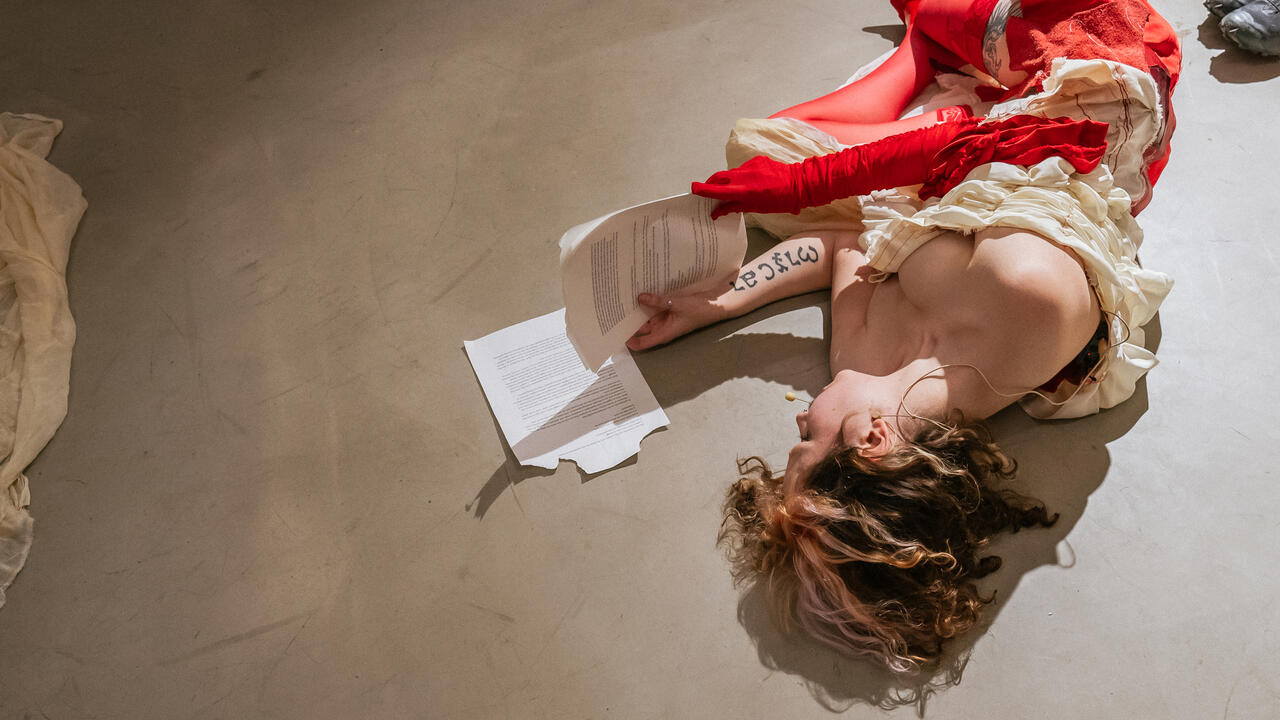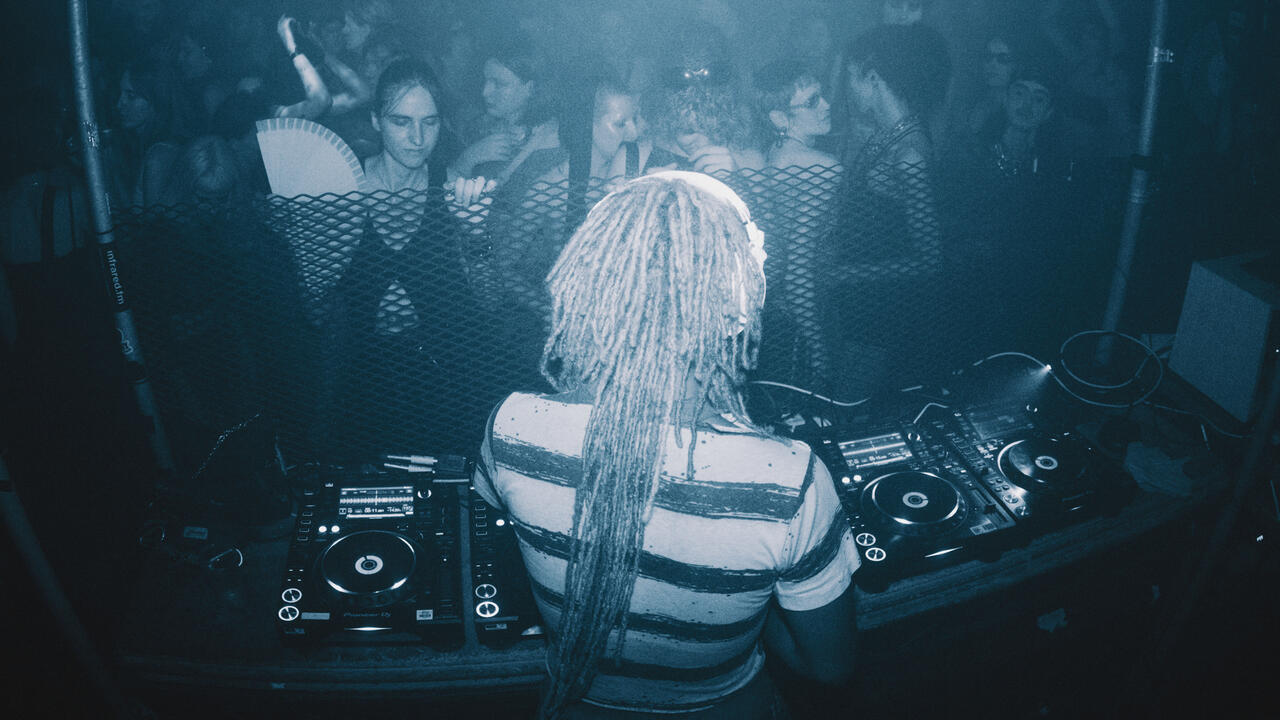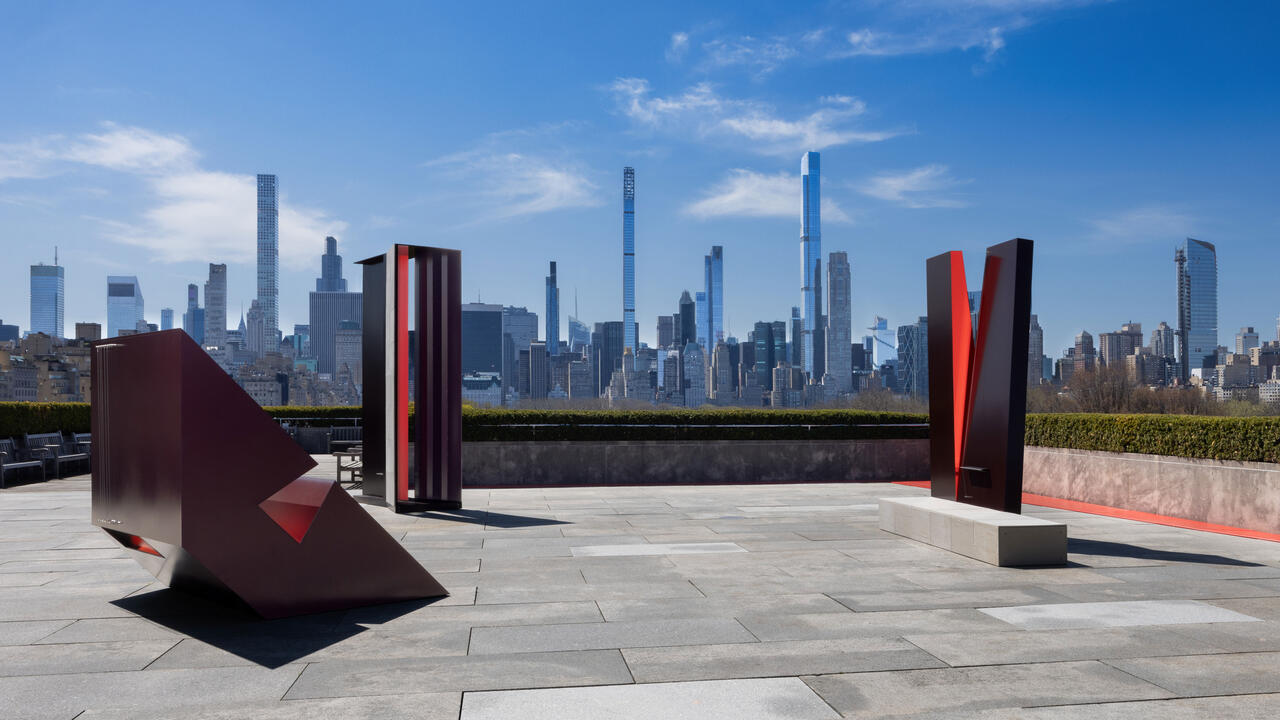In Focus: Kevin Beasley
Sculpture, field recordings and the ghosts of dead rappers
Sculpture, field recordings and the ghosts of dead rappers

Seated at a piano, Kevin Beasley is, first and foremost, sculpture: shoulders hunched and heaving, body contorted and controlled. In performance, surrounded by sound, he’s a picture of muscular stillness, even when he moves. His sound is sculpture, too: less music and more form. In a gallery, it serves an extra-musical use, filling space as much as the objects on the floor or the walls. This was clearly in evidence at Beasley’s first New York solo show this spring at Casey Kaplan (newly relocated from Chelsea to the Flower District in Manhattan). Beasley filled the gallery with music-making equipment and works made with resin cast in the shapes of satellite dishes and clothing bins. It was a motley mix, suggestive of remnants of a lived-in scene with a story to tell.
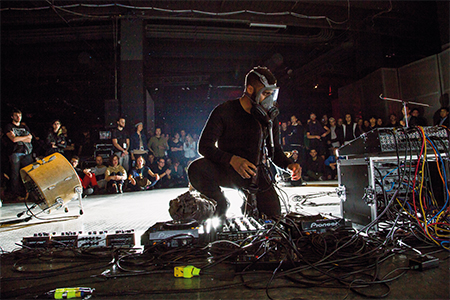
Beasley’s work is too performative and raw to be classed as part of the often-clinical sphere of sound art but, equally, he is too immersed in sound to rank as a sculptor in a merely physical realm. This makes the work all the more promising. Beasley’s biggest public breakthrough came in 2012 at The Museum of Modern Art in New York, where he played with sounds from deceased 1990s-era rappers, like a sort of incantatory DJ conjuring the dead. Presented as an addendum to ‘Some Sweet Day’, a dance programme in MoMA's imposing atrium, the performance piece I Want My Spot Back – titled in reference to a line from a track by The Notorious B.I.G. – consisted of Beasley kneeling on the floor with turntables and working his way through a cappella tracks processed into a miasma of ghostly abstraction. The sound was distended and slow, mournful inits introspection but shot through with a sense of menace, suggesting sound recordings as haunted communiqués from the other side.
I Want My Spot Back originated in the sculpture department at Yale University School of Art, which Beasley attended as a graduate student after college in Detroit. He originally enrolled for automotive design at Detroit but, troubled by listening to lectures on planned obsolescence in a setting as blighted and broken as the Motor City, he switched to art. At Yale, a lifetime of playing and communing with music found its way into his art, in part by way of appreciation for the simultaneously high- and low-tech creation stories of homespun sounds such as Detroit techno. After I Want My Spot Back, Beasley made … for this moment, this moment is yours … (2013), a sound piece comprising a reel-to-reel tape machine and more than 2,000 hours of recordings collected from family and friends. Following that, he continued his performance work with And in My Dream I Was Rolling on the Floor (2014), a work comprising four pieces (each composed for specific times of day), which was sited in the empty Cozad-Bates House, across the street from the Museum of Contemporary Art in Cleveland. Designated as a landmark but otherwise abandoned and ignored, this pre-Civil War property – once the home of a prominent abolitionist – served as a hiding place for escaped slaves as part of the Underground Railroad (a network of secret routes and safe houses for slaves attempting to escape to free states). The sounds Beasley presented here were primarily field recordings from the area surrounding the site, including happenstance organ sounds from a nearby church.

At the heart of Beasley’s solo show at Casey Kaplan was an upright Steinway piano (manufactured in the late 1800s near where the artist lives and works in New York) and a large soundboard with an array of speakers attached (Movement IV, 2015). The piano was internally fitted with minutely sensitive contact microphones, each attached to a pair of keys and fed into the soundboard through 44 separate channels. The sound was big, murky and resonant, with layer upon layer of reverb. Around the space were satellite-dish forms whose cast-resin shells included discarded clothes: house dresses of a kind that Beasley’s grandmother wore, T-shirts and the artist’s own old Air Jordan jacket. While serving as reminders of home, the dishes also worked as acoustic mirrors, reflecting the sound of the space back in on itself. Most of the time, the Steinway sat expectantly, humming with suggestive static while waiting for gallery-goers to sit down and tickle its keys. At other times, it was played in performance by Beasley himself, with sound taking its place as a form of sculpture that, although invisible, was still voluminous enough to fill the room.
Kevin Beasley is an artist based in New York, USA. His first solo exhibition at Casey Kaplan, New York, was held earlier this year. His work will also be included in the exhibition series 'Night (1947-2015)' at The Glass House, New Canaan, which runs until 30 November, and in 'Storylines: Contemporary Art from the Guggenheim', at the Guggenheim Museum, New York, from 5 June to 9 September.










